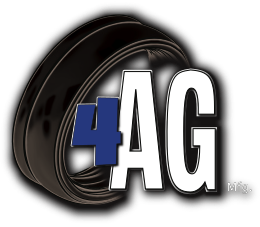Manual vs. Industrial Cultivators- Which One Will Win?
When tending large tracts of land or managing a personal garden, having the right tools is essential for successful cultivation. From the hand-held hoe to powerful tractors, the tools we choose impact the efficiency and effectiveness of our agricultural efforts. Among these tools, the cultivator stands out for its versatility in preparing the soil. Whether in the hands of an amateur gardener or a seasoned farmer, cultivators make significant strides in land preparation. Keep scrolling to learn about the critical role of the cultivator gauge wheel, enhancing both manual and industrial cultivators.
Understanding Cultivators
Cultivators are agricultural tools used for soil preparation and weed control. There are two main types: linear, with teeth; rotary, with a spinning mechanism, like a rotary tiller. Soil aeration tools are vital for pre-planting prep and weed control during crop growth without harming plants. Cultivators target specific areas, unlike harrows, which impact the entire soil surface. The addition of a cultivator gauge wheel helps maintain consistent soil depth, ensuring the crops remain undisturbed while effectively managing weeds.
Manual Cultivator Insights
Discover the efficiency of manual cultivators: simple, practical tools enhancing soil cultivation and plant care for small-scale gardening. The tools' minimalistic design simplifies operation—apply pressure and steer effortlessly. They stand out due to several advantages:
User-friendly operation: Their operation involves basic physical actions without the complexity of mechanical systems.
Minimal upkeep: Unlike their motorized counterparts, these cultivators need no regular maintenance, such as oiling or fuel top-ups.
Precision weeding: They excel in precisely slicing through weeds without disrupting adjacent plant rows, a common issue with powered cultivators.
Access to sensitive areas: These tools are ideal for looking and cultivating around delicate zones such as flower gardens, greenhouses, decorative hills and spaces surrounding trees and shrubs, thanks to their compact design.
Cost-effectiveness: They are more affordable than many advanced, motor-driven models.
However, manual cultivators are not without their drawbacks:
Technological simplicity: They may seem outdated compared to more modern, self-propelled models that include enhancements like the cultivator gauge wheel for improved functionality.
Component wear: The discs of manual rotary cultivators may require replacements over time due to wear.
Limited scope: They are best suited for smaller, manageable areas where the extent of cultivation is not extensive.
Physical exertion: Manual cultivators require physical labor, posing a disadvantage compared to the effortless operation of powered machines.
Reduced effectiveness on tough terrain: Their performance may falter on unbroken or compacted soil, where a robust cultivator gauge wheel could otherwise make a significant difference.
Industrial Cultivator Benefits
Commercial cultivation, particularly in truck farming, typically relies on tractor power, often involving row-crop tractors for efficiency.
Sizes of industrial cultivators can range widely, from a compact 10 feet to a massive 80 feet in width. This size variation accommodates different agricultural scales and needs.
Many cultivators enhance road safety and convenience by equipping them with foldable hydraulic wings.
Various forms of cultivators serve diverse farming needs: they trail behind tractors, attach to three-point hitches, or mount under tractors.
Powered by a tractor's power take-off shaft, active cultivator implements play a crucial role in both primary and secondary tillage, particularly in lighter soils where they might replace plowing.
The most substantial cultivator models, requiring over 150 horsepower from a tractor, span up to 20 feet wide.
The integration of cultivators and inter-cultivators in farming practices promotes soil fertilization and manipulation, which is essential for optimal plant growth.
Compared to manual methods, using cultivators significantly lowers operational costs and minimizes the time spent on soil preparation and post-harvest activities.
The adaptability of cultivators to work efficiently over various sizes of agricultural fields has minimized resource and monetary investments per unit area of land.
With the strategic use of cultivators, even smaller economic farms can maximize profitability, enhancing the overall economic well-being and progress of farmers.
Enhance Your Farming with 4AG Manufacturing
Transform your agricultural practices with the planter tires for the cultivator gauge wheel from 4AG Manufacturing. Proudly made in the USA, our tires are designed for easy assembly and provide unmatched longevity. With us, you won't need to replace your planter tires again. We're committed to revitalizing simplicity and efficiency in farming through our high-quality, durable products.

